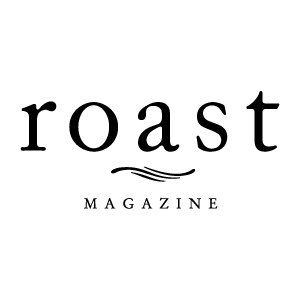Relationship Coffee and Direct Trade: Two Decades On
By Geoff Watts
Togetherness [Noun]
as in unity
a state or feeling of closeness and happiness among people who are together as friends, family members, colleagues, etc.
Similar: solidarity, cooperation, partnership, community, oneness
In the late 1990s and into the early 2000s, coffee professionals across the globe began to realize two things that profoundly altered their relationships with the product around which their livelihoods revolved: that its quality potential was largely untapped, and that coffee itself was not merely a beverage but a powerful instrument with the capacity to transform lives and landscapes for all who touch it throughout the value stream, up to and including the end customer. There was a growing recognition that coffee could enable positive socioeconomic, environmental and cultural change, and even augment human health. Coffee, when bought and sold with the right kinds of intent, is a type of miracle fruit. However, when wielded without such conscience or purpose, its powers evaporate instantly, leaving us with just another problematic agricultural commodity.
The latent potential, magnetic appeal and unexplored diversity of coffee quality stimulated a nearly irresistible impulse to get closer to its source. More roasters understood that they were cultivating a quandary; they were becoming increasingly dependent on coffee’s sensory qualities and nuances as key sources of differentiation and competitive advantage, yet many had only cursory knowledge about the details of its production. At the same time, their access to the astoundingly diverse array of options was limited by the outdated and opaque nature of trade at that time. Their traditional intermediaries were in effect gatekeepers, and in the late 1990s there were relatively few to choose from. As more coffee buyers got out from behind their desks and onto planes, increased connectivity with exporters and farmers awakened all to the exciting possibilities that come with closer relationships.
More active collaboration within the supply stream created game-changing opportunities to generate nearly limitless value through quality improvements, increased traceability, greater consistency and more granular storytelling. New avenues opened to learn, to grow, and to better understand how to navigate the increasingly globalized nature of our shared world. All of this drove a generation of coffee people to engage in some form of what came to be called relationship coffee or direct trade.
For consumers, this started a tidal wave of changes as well. Before 2000, locating a coffee that was produced, roasted and brewed with the precision required to effectively showcase its broad range of sensory detail was a needle-in-a-haystack proposition in even the largest cities. This is not to say that there was no great coffee around, or that everything post-2000 amounted to unprecedented innovation. To the contrary, the third wave emerged in the wake of the trails cut by early pioneers of specialty coffee who had recognized many of the same truths. A fundamental difference was that most of them had worked in relative isolation, and relative obscurity, during a period that predated the popular emergence of slow food farm-to-table concepts and microbrews into broader consumer awareness, both of which helped to propel a larger appreciation for craftsmanship in the culinary arts and emphasized the importance of understanding how things are made.
At the same time, popular roast styles of the day did no favors to nuance, and few retail coffee experiences offered meaningful information about either provenance or sensory attributes. The small minority of producing countries whose coffees were afforded named recognition usually got no more than that; specificity beyond the surface-level identifiers was conspicuously absent from the pitch. In this way, coffees were not living up to Erna Knutsen’s use of the term “specialty” to describe coffees produced in microclimates that allow for high quality and unique flavor profiles.
Fast forward to the present and the opposite is true; few coffees sold on the premise of quality come without some explanatory detail. The very minimum standard of today includes a coffee’s origin and its basic flavor descriptors, although most roasting companies go well beyond that. Traceability is now an expectation rather than an exception. Roast profiles meticulously designed to highlight nuance (instead of paving over it) are widely embraced, and a decent level of extraction precision—including advanced control over grind particle size, flow rates, and even water chemistry—is fundamental. Specialty coffee advanced a lot in a short period of time.
Two decades on, we stand at a good place to take stock. The passage of time allows us to assess outcomes rather than presuppose them. Our collective understanding of what relationship coffee is—and can be—has evolved, as has its application. Some say that direct trade has run its course, yet in 2024 there is more investment in mechanisms to enable it than at any point in specialty coffee’s history. We can best reflect on this tension if we first consider what drove these industry innovations and, in doing so, clarify some terms.
Advertisement










